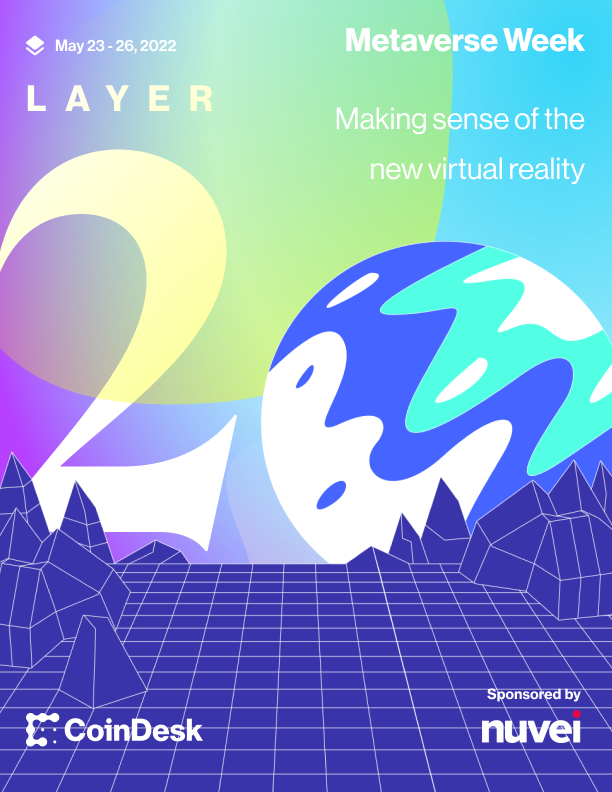NFT Art Museums Are a Good Idea
The metaverse turns galleries global, and helps fund the arts. This article is part of “Metaverse Week."
:format(jpg)/cloudfront-us-east-1.images.arcpublishing.com/coindesk/GWHPPNTTZ5DAFMUIGET4FHUBTY.jpg)
:format(jpg)/cloudfront-us-east-1.images.arcpublishing.com/coindesk/GWHPPNTTZ5DAFMUIGET4FHUBTY.jpg)
The world of fine art is filled with gatekeepers. A select few – an elite echelon of curators, collectors and tastemakers – have the power to decide which art we should value. Society has largely accepted that imbalance as standard, because for centuries physical and economic constraints have prevented most people from meaningful participation in this ecosystem.
The metaverse is a paradigm shift away from that reality. Galleries, exhibits and museums – once restricted by limitations like scheduling, fundraising and the logistics of physically managing “bodies” of work – can now extend their presences in infinite ways.
Harold Eytan is CEO of Particle. This article is part of “Metaverse Week."
Digital curators can produce more shows and react to important cultural trends and events in real time. And artists and collectors can now share spaces, collaborate and connect through art in virtual environments from anywhere in the world. Virtual reality (VR) headsets allow people to transcend geography and fully immerse themselves in a digital place.
Take the Museum of Crypto Art (MoCA), for example, a virtual museum built in Somnium Space. Co-founded by seminal digital art collector Pablo Rodriguez-Fraile and designed by Desiree Casoni, the virtual museum collects tokenized art pieces that were purchased as non-fungible tokens (NFT).
MoCA’s artworks are on display for anyone with an internet connection. And because NFT ownership is validated on the blockchain, the museum is able to extend access without diluting the monetary value of the works. In fact, Rodriguez-Fraile may be making the case for why NFTs have value.
With virtually none of the traditional overhead of a physical gallery, designers and curators are able to make the exhibitions as imaginative and as immersive as they’d like while spending less time and capital.
The same is true for architects, who are limited by little more than their imaginations while designing in the metaverse. Gone are spatial restrictions and cost barriers for building transformative, otherworldly experiences.
See also: Profile Pic NFTs Are Suffocating Crypto Art | Opinion
For museums, this means that each piece of art could have its own form-fitting building – or even world – where the message and character of the work is commented on or enhanced by its vivid and infinitely dynamic setting.
The metaverse enables creators to architect experiences in entirely new dimensions. What could art feel like on the Moon? In the center of a black hole? Or, if you want to bring it back to reality, metaverses like Somnium Space enable curators to incorporate the actual changing seasons and times of day.
Interacting with physical art is never going away, of course – nor should it. There’s nothing like being in the presence of a true tour de force. But the metaverse allows us to extrapolate that magic and expand access to a larger number of would-be art appreciators.
That newfound access is particularly important. As new generations spend more of their time online, museums and galleries are constantly looking for novel ways to bring their historic collections to wider communities.
Curators understand that art is more than just aesthetics and materials – it represents a moment in time and transmits bygone eras through a perceptive lens, teaching us about who we were and who we can be.
As traditional art spaces struggle to find consistent foot traffic, the metaverse gives these cultural institutions a means of revitalizing past worlds for digitally native audiences.
But how do we navigate ownership in a world where everything is accessible? Profile picture (PFP) collections have popularized NFTs by attaching identity to a digital artwork that can be monetized in its native form. What if we applied the same concepts to art’s great masterpieces?
Even more revolutionary than the metaverse’s increased access and new experiential forms is the blockchain’s ability to authenticate art. The physical art world is opaque, and it can be difficult to demonstrate provenance – even with masterpieces. Blockchain protocols, though, can make pricing and ownership transparent and can even be fractionalized among many owners.
Before today, most people could never own a Banksy – or any of the works that fetch millions of dollars at auction houses. But by transferring the value of a physical good to the blockchain and creating a legal structure to support that conversion, we can effectively fractionalize masterpieces and make them attainable to a much greater population.
More expansive ownership will give rise to a new generation of art collectors, catalyze greater interest in fine art and introduce myriad token-gating opportunities that build connection and community.
One of the great disconnects in the fine art world is that its mechanics don’t often reflect the ethos of the artists themselves. Does Banksy make art hoping that the select few will elevate his name to the art pantheon, so that his pieces can be sold to ultra-wealthy individuals for millions of dollars? Did Basquiat? Or Frida Kahlo? Probably not.
The metaverse expands access and introduces new ownership models, bringing art closer to the people – and to the human conditions that inspired the art in the first place.
More from Metaverse Week:
Rather than letting players port weapons or powers between games, non-fungible tokens will more likely serve as building blocks for new games and virtual worlds.
Fundamentally, the "metaverse" is a game – but one with real consequences and opportunities.
The future possibilities of the metaverse are presumably limitless, but is there anything you can do in the metaverse right now?
/arc-photo-coindesk/arc2-prod/public/LXF2COBSKBCNHNRE3WTK2BZ7GE.png)

:format(jpg)/www.coindesk.com/resizer/1ZuyTdwQ7-n0d52Tr1RJXx9vaDw=/arc-photo-coindesk/arc2-prod/public/AQWVNWCDXVDXVJ3GVFGFAC22EY.jpeg)